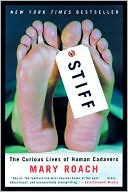Category Books
- Fiction Books & Literature
- Graphic Novels
- Horror
- Mystery & Crime
- Poetry
- Romance Books
- Science Fiction & Fantasy
- Thrillers
- Westerns
- Ages 0-2
- Ages 3-5
- Ages 6-8
- Ages 9-12
- Teens
- Children's Books
- African Americans
- Antiques & Collectibles
- Art, Architecture & Photography
- Bibles & Bible Studies
- Biography
- Business Books
- Christianity
- Computer Books & Technology Books
- Cookbooks, Food & Wine
- Crafts & Hobbies Books
- Education & Teaching
- Engineering
- Entertainment
- Foreign Languages
- Game Books
- Gay & Lesbian
- Health Books, Diet & Fitness Books
- History
- Home & Garden
- Humor Books
- Judaism & Judaica
- Law
- Medical Books
- New Age & Spirituality
- Nonfiction
- Parenting & Family
- Pets
- Philosophy
- Political Books & Current Events Books
- Psychology & Psychotherapy
- Reference
- Religion Books
- Science & Nature
- Self Improvement
- Sex & Relationships
- Social Sciences
- Sports & Adventure
- Study Guides & Test Prep
- Travel
- True Crime
- Weddings
- Women's Studies
Stiff: The Curious Lives of Human Cadavers » (Reprint)

Authors: Mary Roach
ISBN-13: 9780393324822, ISBN-10: 0393324826
Format: Paperback
Publisher: Norton, W. W. & Company, Inc.
Date Published: May 2004
Edition: Reprint
Author Biography: Mary Roach
Journalist and former Salon.com columnist Mary Roach didn't leave readers and critics cold with her first book, Stiff: The Curious Lives of Human Cadavers. In fact, the comical-yet-scientific look at the "life" of the dead body throughout history earned her a spot in the Barnes & Noble Discover Great New Writers program.
Book Synopsis
"One of the funniest and most unusual books of the year....Gross, educational, and unexpectedly sidesplitting."—Entertainment Weekly
The New Yorker
In the twelfth century, the bazaars of Arabia were known to offer an exotic and allegedly salutary concoction called "mellified man" -- essentially human remains steeped in honey. Mellified man was also known as "human mummy confection," and one recipe for it called specifically for "a young, lusty man" as the main ingredient. This strange footnote in the history of death and decay is recalled by Mary Roach in her surprisingly lively Stiff: The Curious Lives of Human Cadavers. "Cadavers," Roach writes, "are our superheroes: They brave fire without flinching, withstand falls from tall buildings and head-on car crashes into walls. "We learn, among other notable macabre facts, that a detached human head is about the size and weight of a roaster chicken, that King Ptolemy I of Egypt first green-lighted autopsies in 300 B.C., that embalming-fluid companies once sponsored best-preserved-body contests, and that the French at the time of the Revolution were obsessed with discovering how long guillotined heads remained aware of their surroundings.
Roach reports that the next big thing on the mortuary horizon is something called the "tissue digestor," which replaces the outmoded options of burial or cremation with, essentially, a big tub of lye. In Rest in Peace, the historian Gary Laderman looks into the culture of funeral homes in America, noting that embalming took off after the Lincoln assassination and became a booming business in the twentieth century, nudged along by the popularity of mummy films and a burgeoning class of undertakers leafing through Casket & Sunnyside magazine. As Roach puts it: "Death. It doesn't have to be boring." (Mark Rozzo)
Table of Contents
| Introduction | 9 | |
| 1 | A Head is a Terrible Thing to Waste: Practicing surgery on the dead | 19 |
| 2 | Crimes of Anatomy: Body snatching and other sordid tales from the dawn of human dissection | 37 |
| 3 | Life After Death: On human decay and what can be done about it | 61 |
| 4 | Dead Man Driving: Human crash test dummies and the ghastly, necessary science of impact tolerance | 87 |
| 5 | Beyond the Black Box: When the bodies of the passengers must tell the story of a crash | 113 |
| 6 | The Cadaver Who Joined the Army: The sticky ethics of bullets and bombs | 131 |
| 7 | Holy Cadaver: The crucifixion experiments | 157 |
| 8 | How to Know if You're Dead: Beating-heart cadavers, live burial, and the scientific search for the soul | 167 |
| 9 | Just a Head: Decapitation, reanimation, and the human head transplant | 199 |
| 10 | Eat Me: Medicinal cannibalism and the case of the human dumplings | 221 |
| 11 | Out of the Fire, into the Compost Bin: And other new ways to end up | 251 |
| 12 | Remains of the Author: Will she or won't she? | 281 |
| Acknowledgments | 293 | |
| Bibliography | 295 |
Subjects
 Medicine
Medicine  Basic Sciences
Basic SciencesMedical Books
 Medicine
Medicine  Reference - Medicine
Reference - MedicineNonfiction
 Social Sciences
Social Sciences  General & Miscellaneous
General & MiscellaneousScience & Nature
 Social Sciences
Social Sciences  General & Miscellaneous
General & MiscellaneousScience & Nature
 All Science & Nature
All Science & Nature  Biology & Life Sciences
Biology & Life SciencesScience & Nature
 All Science & Nature
All Science & Nature  Science - Applied
Science - AppliedSocial Sciences
 General & Miscellaneous
General & Miscellaneous  Death & Dying - Sociocultural Aspects
Death & Dying - Sociocultural AspectsNonfiction
 Medicine
Medicine  Medicine
MedicineNonfiction
 Science & Nature
Science & Nature  Biology
BiologyNonfiction
 Science & Nature
Science & Nature  All Science & Nature
All Science & Nature
